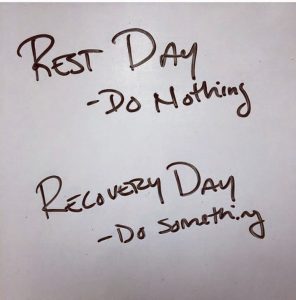Have you ever thought that the more time and consecutive days you spend in the gym could be counterproductive to your goals? Believe it or not, the time you spend outside of the gym is just as important as the time you spend in the gym training. Your body can only rebuild, repair and strengthen while you are at rest. If you continue to train day in and day out, you are only furthering muscle breakdown. Recovery is important to prevent injury, reduce inflammation, relieve soreness, and recharge mentally. The more you put into your recovery, the better your results and progress will be.
Recovery includes all aspects of your life from sleep to nutrition (how you fuel your body), and mobility to stress management. You should aim to get at least 7-9 hours of sleep per night. Focus on good nutrition and stay hydrated; this includes the types of foods you are eating and also making sure you are eating enough calories to support your daily activities.
 Recovery days need to be incorporated into your training schedule. These can be either a complete rest day to an active recovery day.
Recovery days need to be incorporated into your training schedule. These can be either a complete rest day to an active recovery day.
Active recovery is time spent doing activities that maximize your body’s repair through low intensity activities. By staying active, you are promoting blood flow and circulation to your muscles, which will in turn speed up the muscle rebuilding process. Thus, by lowering your intensity, you are actually fostering increased strength and intensity in the gym.
Active recovery can include walking, running, rowing, hiking, biking, swimming, or even just getting outside to play with your kids. You can also use active recovery days to work on a skill – basic gymnastics movements are a great place to start (think hollow rocks, supermans, pull-ups or ring rows, handstand holds to the wall, HSPUs), or grab a kettlebell and work on those Turkish Get-ups! Just remember, whatever you choose, keep the intensity low. In other words, if you choose to run, just go for a light jog. You would not want to go for your fastest mile or do sprints, as these would be higher intensity and therefore not considered active recovery.
 It is usually recommended to incorporate one active recovery day and one complete rest day into your weekly training program. Don’t forget, recovery should also include foam rolling and mobility – EVERY day of the week.
It is usually recommended to incorporate one active recovery day and one complete rest day into your weekly training program. Don’t forget, recovery should also include foam rolling and mobility – EVERY day of the week.
I understand where “low intensity” might be a foreign concept to you… or at least one you may not be particularly fond of, especially when we are all about high intensity during WODs. However, overtraining without adequate recovery will weaken even the strongest athletes. To maintain high intensity in your WODs, increase strength and endurance, you must place as much focus on your recovery as you do your training.
*
*
WRITTEN BY: Janna Davis



